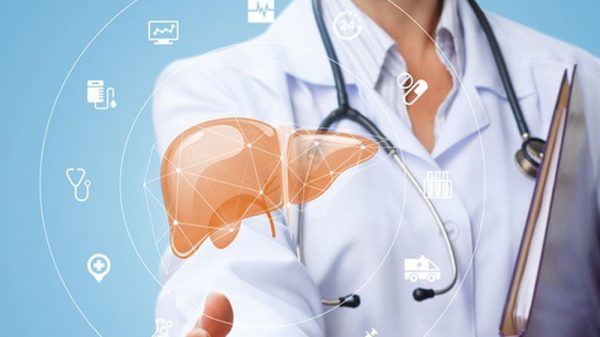Do you have liver disease? Statistics show that almost 10% of the world’s deaths involved in liver disease. It’s becoming more common due to factors like highly-processed food, lack of exercise, and heavy drinking. If you’ve been diagnosed with liver disease it’s important to know certain information. That includes cirrhosis of the liver death statistics. This shows your outlook for the disease based on various statistics related to serious diseases. This can help you determine what you can do to improve your situation. As with other late-stage conditions you can always take steps to make your situation the best it can be.
It’s also important to know the steps you can take to help prevent liver cirrhosis. This is the fourth stage of the disease so it’s tougher to manage than the earlier stages. However, you can indeed take steps to help prevent your condition from progressing to the latter stages of the disease. This includes taking steps healthy diet, regular exercise, and moderate alcohol. Nothing in life is 100% but such actions can help to reduce your risk of developing liver cirrhosis. That’s definitely something worth doing for good overall health. It’s important to keep all vital organs as healthy as possible.
What Exactly Is Liver Cirrhosis?
This is a late-stage liver disease that happens over several years. It involves liver scarring that gradually replaces healthy cells in the liver. If the process continues the scar tissue buildup can become worse and within time cause the liver to stop functioning.
The liver has an amazing ability to recover. However, over time the effects of damage start to take their toll. Within time scar tissue starts replacing healthy liver cells. When that happens the condition becomes more serious. The reason is blood gets blocked from going through the liver.
On the difficult things about liver cirrhosis is it’s uncommon for there to be symptoms during the early stages. So it’s possible to have this condition and simply not be aware of it.
However, the situation changes if the liver damage continues. Over time the liver’s function is affected and it can’t work properly. There are various signs/symptoms to watch out for:
- Pain/tenderness in the liver area
- Appetite loss
- Nausea
- Weakness
- Difficulty falling asleep
- Bodyweight loss
- Red palms
- Itchy skin
- Blood capillaries are seen on the skin
Over time the cirrhosis becomes more serious. If that happens there are other symptoms to watch out for. They include:
| Confusion | Dizziness |
| Bleeding gums | Easy bruising |
| Hair loss | Fevers |
| Loss of memory | Less mass in arms/body |
| Risk of infection | Jaundice (yellow eyes/skin) |
| Personality changes | Faster heartbeat |
| Lower sex drive | Fluid buildup (legs, feet, ankles) |
| Muscle cramps | Problems processing alcohol/drugs |
If you have several of the above-mentioned symptoms then it’s important to get it checked out immediately. This can give you peace of mind whether or not you have liver cirrhosis.
There are various types of treatments you can undergo if you have liver disease. They include:
- Medications
- Portal vein management
- Tube with balloon
- TIPSS
- Alcohol addiction treatment
- Banding
Sometimes there are complications involved with cirrhosis. They include ones like infections. It’s important to deal with specific complications.
Cirrhosis of the Liver: Death Statistics
The mortality rates for liver cirrhosis differ from various countries. It’s important to know some of the key statistics. This can help to provide an outlook for the future so you’ll know what you should expect and what steps you can take to improve your situation.
In the USA liver disease/cirrhosis cause around 35,000 deaths yearly. It’s one of the top 10 causes of death in the USA and results in 12% of the country’s total deaths. It’s quite common for patients to pass away before 70 years old.
Some deaths are also linked to various complications. For example, there are certain ones like hepatitis, drugs, and autoimmune disease. These figures are much lower in terms of mortality rates but still cause some fatalities.
Various treatments are available for liver disease patients with cirrhosis. This includes several medications that scientists have studied. However, the results have been mixed in terms of the results they produce for patients.
Another option is surgery, which can be done. They can change the blood flow of the liver. This helps to lower blood pressure on the vital organ. However, this type of surgery has risks and can actually cause some complications. Statistics also show that there’s no surgery that’s proven to boost long-term survival rates.
The outlook in terms of survival rates is related to various factors. One of the main ones is the kind of cirrhosis the patient is diagnosed with.
One of the best steps to take is to stop alcohol drinking. Studies show that just half of those with serious alcoholic cirrhosis live for 2 years. Meanwhile, about one-third live for 5 years.
The patient’s recovery rate drops when there are various complications. Studies show that certain treatments seem to be effective for certain kinds of cirrhosis. One option is a liver transplant, which is expensive and rare.
Best Tips for Preventing Liver Cirrhosis
1. Get a hepatitis vaccine
This is especially true if you’re more likely to contact someone with hepatitis. Make sure to get a vaccine for hepatitis B in particular. There’s none available for Hep C.
2. Eat healthy food
Make sure to limit your saturated/trans fat and bad cholesterol in particular. These can increase your risk of liver disease. You should also watch your weight and try to avoid becoming overweight/diabetes. Besides eating healthy food make sure to eat small portions. This can help to prevent getting late-stage liver disease.
3. Avoid getting hepatitis
The reason is it’s actually liver inflammation. A virus usually triggers hepatitis. The most common types are A, B, and C. In fact, serious Hep B/C can result in cirrhosis.
Here’s how they’re passed to other people. Hepatitis B is transmitted to other people through body fluids like blood. Meanwhile, that happens with Hep C through contact between two people’s blood. Hepatitis C produces a higher risk of cirrhosis than Hep B.
There are some key steps to take to reduce your risk of hepatitis. Avoid unprotected sex, for example. This can help lower your risk of getting the disease and developing live cirrhosis as well.
4. Decrease alcohol consumption
When you drink too much alcohol the liver swells. If this continues it can result in cirrhosis. It’s worth noting that it takes a long time and often happens after a decade or more of very heavy drinking. However, it’s possible to experience this condition before that time.
The key takeaway is to reduce your alcohol consumption and consider tipping the cup for the last time. If you’re going to drink then limit it to 1 can of beer or glass of wine daily. The reason is the body can only process a small amount of alcohol daily so try to prevent cirrhosis of the liver death.























